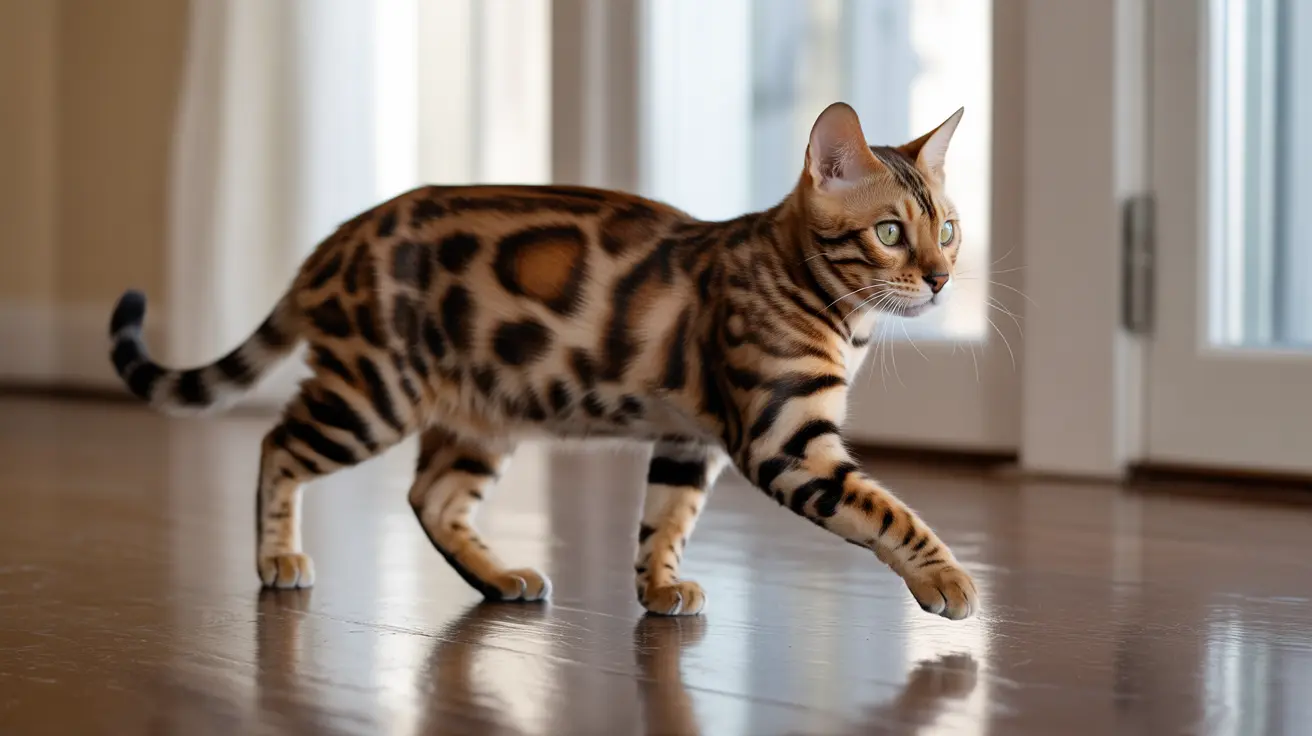The Science Behind Digitigrade Locomotion
Digitigrade legs are an evolutionary marvel that sets cats apart from many other animals. Unlike humans, who are plantigrade walkers (walking on the entire foot), cats walk on their toes with their heels and ankles elevated above the ground. This adaptation comes from the Latin words "digitus" (finger) and "gradior" (walk), literally meaning "toe-walker."
The anatomical structure includes elongated foot bones and specialized joints that effectively lengthen the leg, creating a spring-like mechanism that enhances both speed and stealth.
Anatomical Features and Benefits
Enhanced Speed and Agility
Digitigrade legs provide cats with several advantages:
- Increased stride length
- Better acceleration capability
- Superior jumping ability
- Improved balance and coordination
Silent Movement and Hunting Efficiency
The toe-walking stance, combined with soft paw pads, allows cats to move almost silently. This stealth factor is crucial for their hunting success, enabling them to approach prey without detection.
Understanding Your Cat's Leg Structure
What many people mistake for a cat's "backward knee" is actually their ankle joint. The true knee is located higher up on the leg and bends in the same direction as human knees. This design creates a natural spring-loaded system that helps cats:
- Absorb impact when landing
- Generate powerful jumping force
- Maintain balance on narrow surfaces
- Execute quick directional changes
The Role in Predatory Behavior
Digitigrade legs are essential for cats' hunting strategies. The combination of powerful muscles, flexible joints, and toe-walking ability allows them to:
- Stalk prey silently
- Pounce with precision
- Chase at high speeds
- Navigate complex terrain effortlessly
Frequently Asked Questions
What are digitigrade legs and how do they affect my cat's movement?
Digitigrade legs are a specialized limb structure where animals walk on their toes rather than flat feet. This adaptation gives cats increased speed, agility, and the ability to move silently, significantly enhancing their natural hunting abilities.
Why do cats appear to have "backward knees" and what joint is it actually?
What appears to be a backward knee is actually the cat's ankle joint (hock). Their true knee is located higher up on the leg and bends in the same direction as human knees. This arrangement creates a spring-like mechanism that aids in jumping and running.
How do digitigrade legs help cats run faster and move more silently?
Digitigrade legs provide cats with longer effective limb length, increasing stride length and speed. Walking on their toes with soft paw pads allows for nearly silent movement, crucial for hunting success.
What are the differences between digitigrade, plantigrade, and unguligrade leg types?
Digitigrade animals (cats, dogs) walk on their toes, plantigrade animals (humans, bears) walk on their entire foot, and unguligrade animals (horses, deer) walk on their toenails or hooves. Each adaptation serves different evolutionary purposes and locomotion needs.
Can digitigrade leg anatomy influence a cat's hunting and jumping abilities?
Yes, digitigrade leg anatomy significantly enhances a cat's hunting and jumping abilities by providing better spring action, increased speed, silent movement, and superior balance control during predatory activities.
Conclusion
Understanding your cat's digitigrade legs helps explain their remarkable athletic abilities and graceful movements. This evolutionary adaptation not only makes them excellent hunters but also contributes to their characteristic feline grace and agility. Whether your cat is scaling heights, chasing toys, or silently stalking through your home, their digitigrade legs play a crucial role in these everyday activities.






